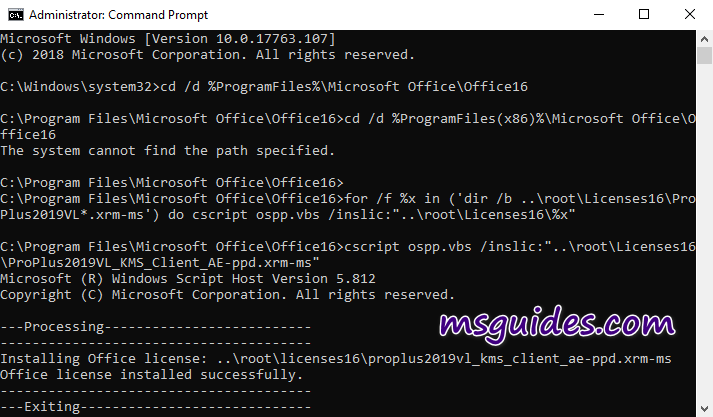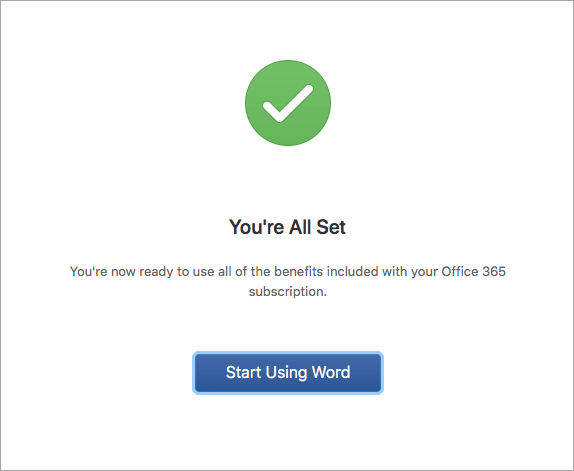If you’ve installed your Volume licensed Microsoft Office copy with MAK key and now want to activate it using the corporate KMS server—this article will show you the way on how to do it.
The Differences Between MAK and KMS Keys
First of all, you need to understand how the MAK Office activation differs from KMS. Microsoft offers two types of activation of its products to corporate customers under the Volume License program—MAK (Multiple Activation Key) and KMS (Key Management Service).
How to find your Office Product Key after installation on computer. Here in this article will show you how to find out your Office product key from your computer after installation. Before doing a clean install of Windows, or upgrading to Windows 10 from Windows 7/8/8.1, it is a good idea to find out and save your office product key to a safe location. Hi Ishie, The details on how to activate using the Product Key are given on the MSDN portal, you can expand the details section under 'Office Home and Business 2016 for Mac' for the instructions.
- MAK — this is the key to activate the Office through contacting Microsoft. Activation can be done automatically via the Internet or by phone. MAK is similar to a regular Windows retail key, which is sold in stores. One MAK key can activate several Office copies in the organization. The limit depends on the type of company license agreement (Open, Select, Enterprise Agreement, and so on);
- KMS — the key is used only to activate the KMS server, and on all the computers that have installed the same public GVLK key. GVLK is a Microsoft public key unique to each Office/Windows edition, which is used by all corporate customers to activate volume license Office copies on the local KMS server or using the Active Directory Based activation. After installing such a GVLK key, clients automatically discover the KMS server in the domain and are activated on it.
Using OSPP.VBS Script to Manage Office Product Key
To manage the activation of all versions of Microsoft Office (starting from Office 2007) it distro includes a special vbs script—OSPP.VBS (Office Software Protection Platform), which is located in the directory with the MS Office installed. The location of the ospp.vbs file depends on the version of Office and Windows type (32 or 64 bit; see a table below).
READ ALSOAutomatically Accept Meeting Requests in Microsoft Outlook| Office Version | Windows bitness | Path to OSPP.VBS |
|---|---|---|
| Office 2010 | 32-bit | C:Program FilesMicrosoft OfficeOffice14 |
| Office 2010 | 64-bit | C:Program Files (x86)Microsoft OfficeOffice14 |
| Office 2013 | 32-bit | C:Program FilesMicrosoft OfficeOffice15 |
| Office 2013 | 64-bit | C:Program Files (x86)Microsoft OfficeOffice15 |
| Office 2016/Office 2019 | 32-bit | C:Program FilesMicrosoft OfficeOffice16 |
| Office 2016/Office 2019 | 64-bit | C:Program Files (x86)Microsoft OfficeOffice16 |
To change the MAK key of the installed MS Office copy to KMS, you need to perform the following actions:
- Run the elevated cmd and navigate to the Office installation folder (in this example we use the x86 Office 2016 version on the Windows10 x64 desktop);
Tip1. To run the ospp.vbs script, you must specify the script server cscript executable each time.
Tip2. In order to not to go into the Office directory with the ospp.vbs utility each time, you can add the path to it to the PATH environment variable: set path=%path%; C:Program Files (x86)Microsoft OfficeOffice16.
You can verify that the installed Office copy is activated with the KMS key. Run the command cscript OSPP.VBS /dstatus and verify the following lines are listed: - To change the current Office product key, you need to use the following command:
XXXXX must be replaced with the corresponding GVLK product key from the table below. In this example for Office 2016 Pro Plus, the command to change the KMS key looks like this:
- To immediately activate a copy of Office on the KMS server, run the following command:
The <Product activation successful> line indicates that the KMS server activated this copy of Office.
Note. For successful Office KMS activation, the port 1688 (by default) shouldn’t be blocked between the client, and the KMS server. To allow outgoing traffic on the client, use the following PowerShell command:
On the KMS server, the command must allow incoming traffic on port TCP 1688:
The current status of MS Office activation can be obtained with the command:
As you can see, the result of the command shows that this copy of Office is activated on the KMS server (Office 16, VOLUME_KMSCLIENT channel), and 180 days left until the end of activation (every 7 days the client will automatically renew the activation for another 180 days).
Note. Please note that the activation status is not displayed anywhere in the graphical interface of the Office apps.
In case there is no SRV entry in domain DNS that allows clients to find the KMS server, the address, and port of the KMS server, it can be set manually:
You can also try to find the address and port of the KMS server published in DNS using the
In the future, you can switch back to the KMS Autodiscover mode of the KMS server through DNS:
The OSPP.VBS script also allows you to control the Office activation on a remote computer over the network, the format of the command is:
KMS (GVLK) Keys for MS Office
This table contains the list of Generic Volume License Key for different Office versions:
| MS Office edition | KMS Setup Key (GVLK keys) |
| Office 2019 Professional Plus | NMMKJ-6RK4F-KMJVX-8D9MJ-6MWKP |
| Office 2019 Standard | 6NWWJ-YQWMR-QKGCB-6TMB3-9D9HK |
| Office 2016 Professional Plus | XQNVK-8JYDB-WJ9W3-YJ8YR-WFG99 |
| Office 2016 Standard | JNRGM-WHDWX-FJJG3-K47QV-DRTFM |
| Office 2013 Professional Plus | YC7DK-G2NP3-2QQC3-J6H88-GVGXT |
| Office 2013 Standard | KBKQT-2NMXY-JJWGP-M62JB-92CD4 |
| Office 2010 Professional Plus | VYBBJ-TRJPB-QFQRF-QFT4D-H3GVB |
| Office 2010 Standard | V7QKV-4XVVR-XYV4D-F7DFM-8R6BM |
Office 2016 For Mac How To Activate With Product Key Generator
AuthorRecent PostsCyril Kardashevsky I enjoy technology and developing websites. Since 2012 I'm running a few of my own websites, and share useful content on gadgets, PC administration and website promotion.
I enjoy technology and developing websites. Since 2012 I'm running a few of my own websites, and share useful content on gadgets, PC administration and website promotion.Free Office 2016 Product Key
 Latest posts by Cyril Kardashevsky (see all)
Latest posts by Cyril Kardashevsky (see all) FacebookTwitterWhatsAppTelegramLinkedInEmail
FacebookTwitterWhatsAppTelegramLinkedInEmail